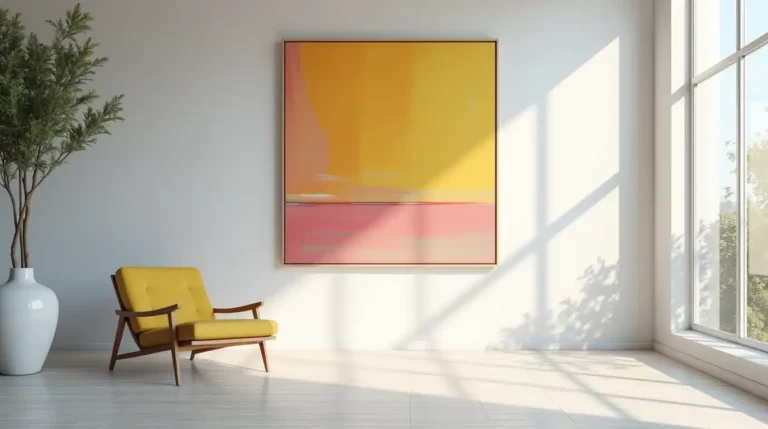Imagine stepping into your living space and feeling an instant sense of calm and clarity—a room where every element works in harmony, and every line, every hue is purposeful. That’s the transformative power of minimalist painting. This art form isn’t about complexity or ornate details; it’s about stripping away the excess to reveal the beauty of simplicity. In this guide, you’ll learn how to harness the power of minimalist painting to create art that not only elevates your decor but also inspires creativity and introspection.
Whether you’re a budding artist looking for DIY projects or a seasoned collector eager to refresh your home with modern abstract designs, this article will guide you through the techniques, trends, and tools you need. From understanding the fundamentals of minimalist art to exploring advanced techniques like using negative space and geometric patterns, you’re about to discover a world where less truly is more.
Table of Contents
Understanding Minimalist Painting
What Is Minimalist Painting?
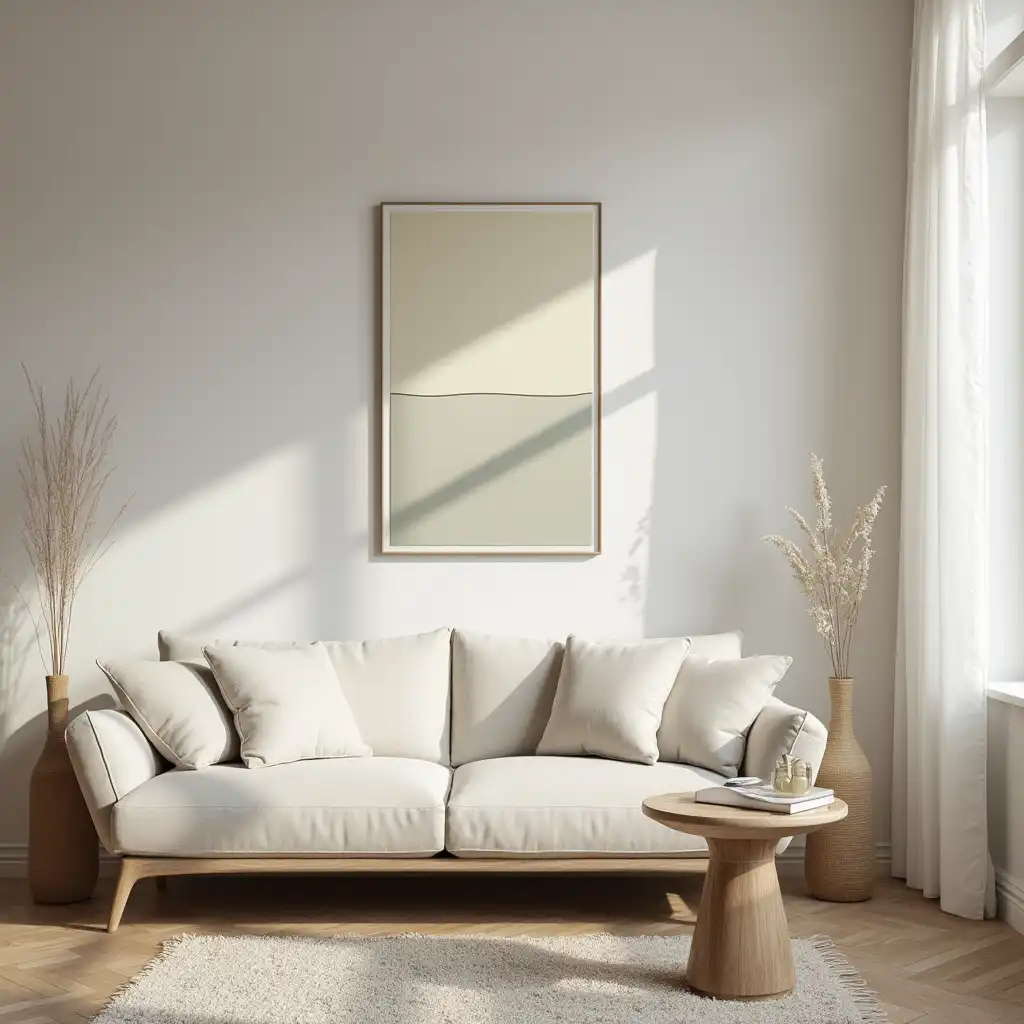
Minimalist painting is an art form that emphasizes simplicity, using a limited color palette, clean lines, and often geometric forms to create striking, uncluttered compositions. Unlike traditional, ornate paintings, minimalist art focuses on the essentials—each brushstroke, each shape, is deliberate and unadorned by superfluous details.
- Key Characteristics:
- Limited Color Palette: Frequently uses monochrome or a few complementary colors.
- Geometric Shapes: Utilizes simple shapes such as squares, circles, or triangles.
- Negative Space: Embraces empty space as an essential element of composition.
- Clean Lines: Emphasizes precision and clarity in the design.
Minimalist painting often sparks questions about what is truly necessary in art, inviting you to reflect on the beauty of simplicity.
The Impact of Minimalist Painting on Your Space
When you integrate minimalist painting into your home or workspace, you invite a sense of calm and focus. This style of art is not only visually striking but also emotionally resonant. It creates a backdrop that allows you to focus, think, and even dream.
Consider these benefits:
- Visual Impact: A well-placed minimalist painting can transform a dull wall into an engaging focal point, drawing attention without overwhelming the space.
- Emotional Clarity: The simplicity of minimalist art promotes a sense of peace, making it ideal for spaces where you need to relax or concentrate.
- Versatility: Its clean and understated aesthetic blends seamlessly with various interior styles—from ultra-modern apartments to cozy, traditional homes.
- Cultural Resonance: Minimalism in art often reflects broader cultural shifts toward simplicity, sustainability, and mindful living.
Below is a quick reference table that sums up these benefits:
| Benefit | Description |
|---|---|
| Visual Impact | Transforms blank walls with striking, uncluttered compositions |
| Emotional Clarity | Evokes calm and focus through simplicity |
| Versatility | Easily integrates with diverse interior design styles |
| Cultural Resonance | Reflects modern values of sustainability and minimalism |
By choosing minimalist painting, you’re not just decorating; you’re curating an atmosphere that supports your lifestyle and mindset.
Trends and Styles in Minimalist Painting
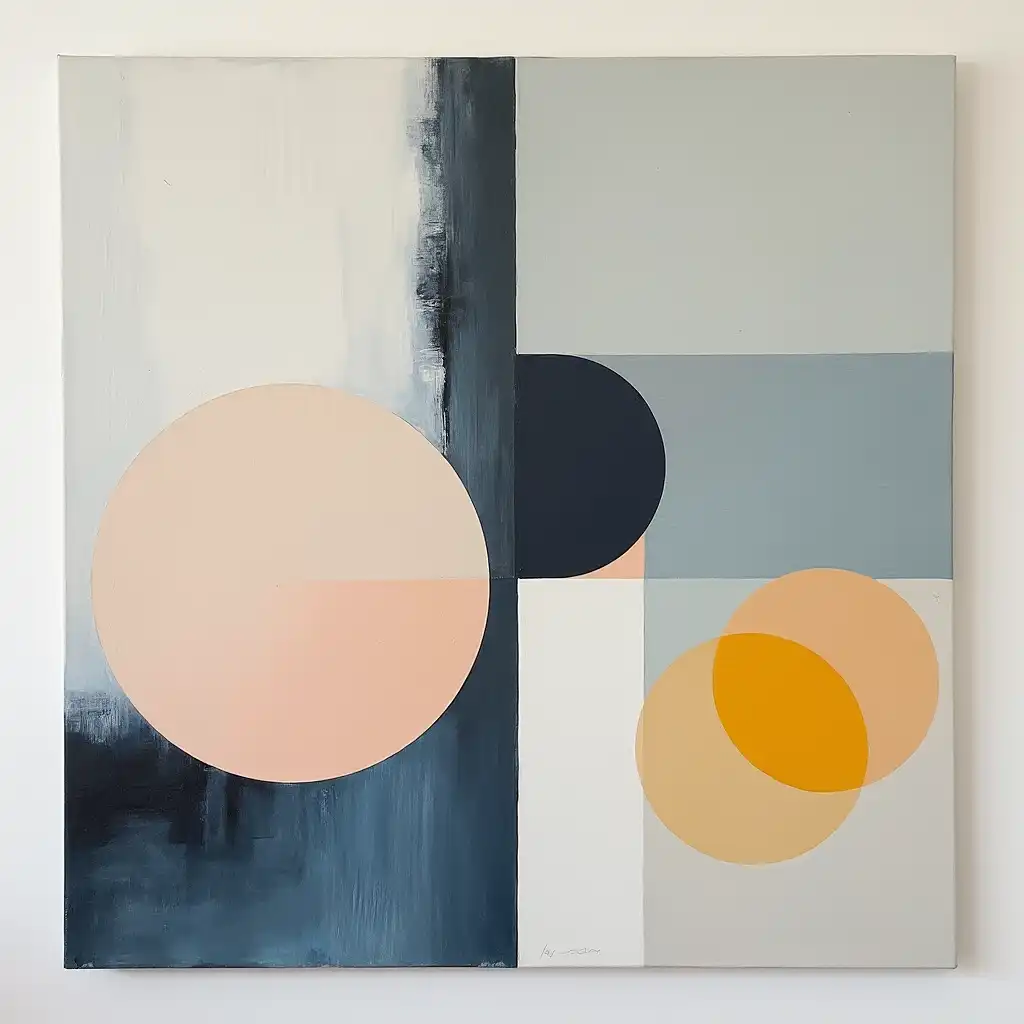
Bold and Abstract Minimalist Designs
In today’s design landscape, minimalist painting is evolving beyond basic simplicity to incorporate bold, abstract elements. Modern minimalist painting often features abstract forms, where shapes and lines interact to create dynamic, almost architectural compositions.
Modern Abstract Designs
- Characteristics:
- Use of geometric shapes, sharp angles, and a restrained color palette.
- Emphasis on negative space to enhance the overall composition.
- Why It Works:
- Ideal for contemporary interiors, these designs offer a balance between visual interest and calm simplicity.
- Examples:
- Abstract Minimalist Painting: Pieces that combine abstract forms with a limited palette, sparking both curiosity and reflection.
- Geometric Minimalist Painting: Works that rely on symmetry and clean lines to create impactful visuals.
Monochromatic and Limited Color Palette Techniques
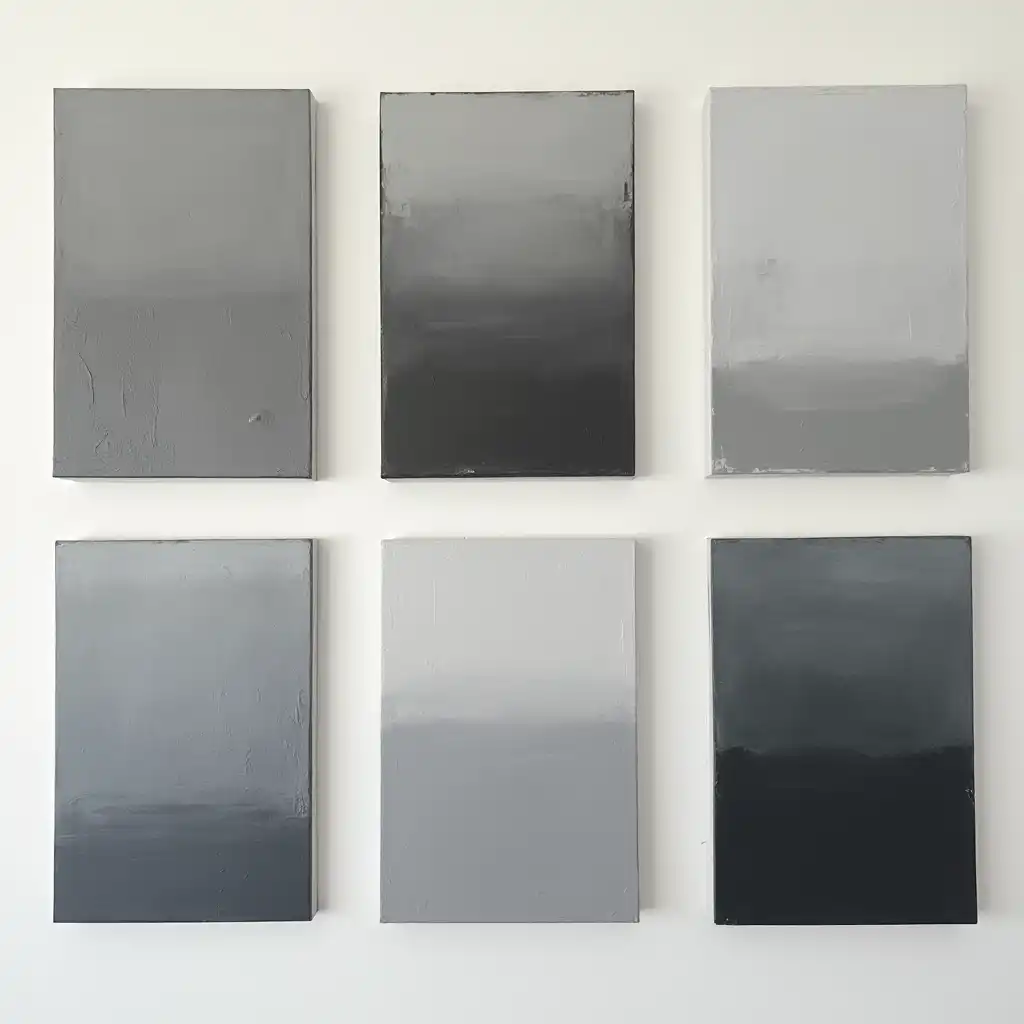
A signature of minimalist painting is the use of a monochromatic or limited color palette. This approach not only creates a cohesive look but also allows the viewer to focus on form and composition without distraction.
- Benefits of Monochromatic Art:
- Creates a sense of unity and harmony in the artwork.
- Enhances the impact of subtle variations in tone and texture.
- Techniques:
- Layering different shades of the same color.
- Using contrasting tones to define shapes and lines.
Incorporating Negative Space
One of the most powerful tools in minimalist painting is negative space—the empty or “unused” area that frames the subject. This technique helps to create balance and draws attention to the essential elements of the artwork.
- Tips for Using Negative Space:
- Allow ample space around the central design.
- Use the negative space to create a sense of openness and calm.
Sustainable and Eco-Friendly Approaches
Sustainability is a growing concern for many, and minimalist painting often embraces eco-friendly practices. Artists are increasingly using recycled materials and environmentally friendly paints to create art that not only looks good but also feels responsible.
- Eco-Friendly Techniques:
- Upcycling materials to create textured, layered effects.
- Using water-based, low-VOC acrylic paints.
- Why It Matters:
- Supports a sustainable lifestyle.
- Often results in unique textures and finishes that add depth to the art.
Creative Ideas for Reinventing Your Walls
Minimalist Painting for Different Spaces
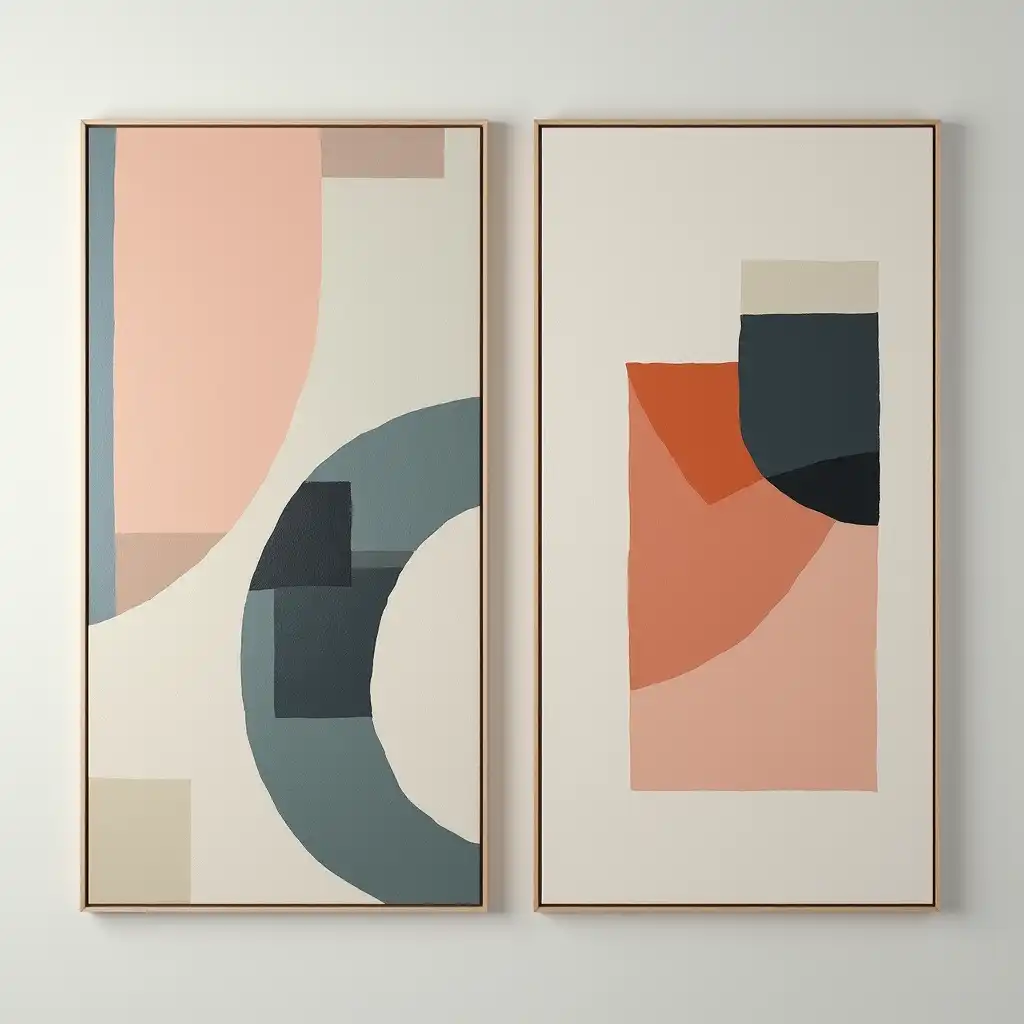
Your home is a collection of unique spaces, and minimalist painting can be tailored to each environment for maximum impact.
For the Living Room
- Key Concepts:
- Use a large-scale minimalist painting as the focal point of your living room.
- Consider abstract minimalist painting or modern minimalist painting to inject energy and sophistication.
- Practical Tips:
- Choose a statement piece with a balanced composition.
- Position it where natural light can enhance its subtle details.
- Complement with neutral furnishings that allow the artwork to shine.
For the Bedroom
- Key Concepts:
- Opt for calming, monochromatic pieces that create a serene atmosphere.
- Incorporate minimalist painting that uses soft, muted tones for a restful space.
- Practical Tips:
- Hang a single, large painting above the bed for a focal point.
- Use simple frames and maintain a clutter-free space.
For the Office
- Key Concepts:
- Choose inspirational minimalist art that promotes focus and creativity.
- A well-placed minimalist painting in your office can boost productivity.
- Practical Tips:
- Select art with clear lines and calming colors.
- Position your painting where you can see it throughout the day to keep motivated.
For Small Spaces
- Key Concepts:
- Use minimalist wall art painting to make a small room appear larger.
- Vertical arrangements or layered artworks can create an illusion of height.
- Practical Tips:
- Consider a series of smaller pieces arranged in a gallery style.
- Use removable or peel-and-stick options for flexibility, such as removable wall art murals.
DIY Minimalist Painting Projects
Creating your own minimalist painting can be both rewarding and budget-friendly. Here’s a step-by-step guide to get you started:
Materials and Tools
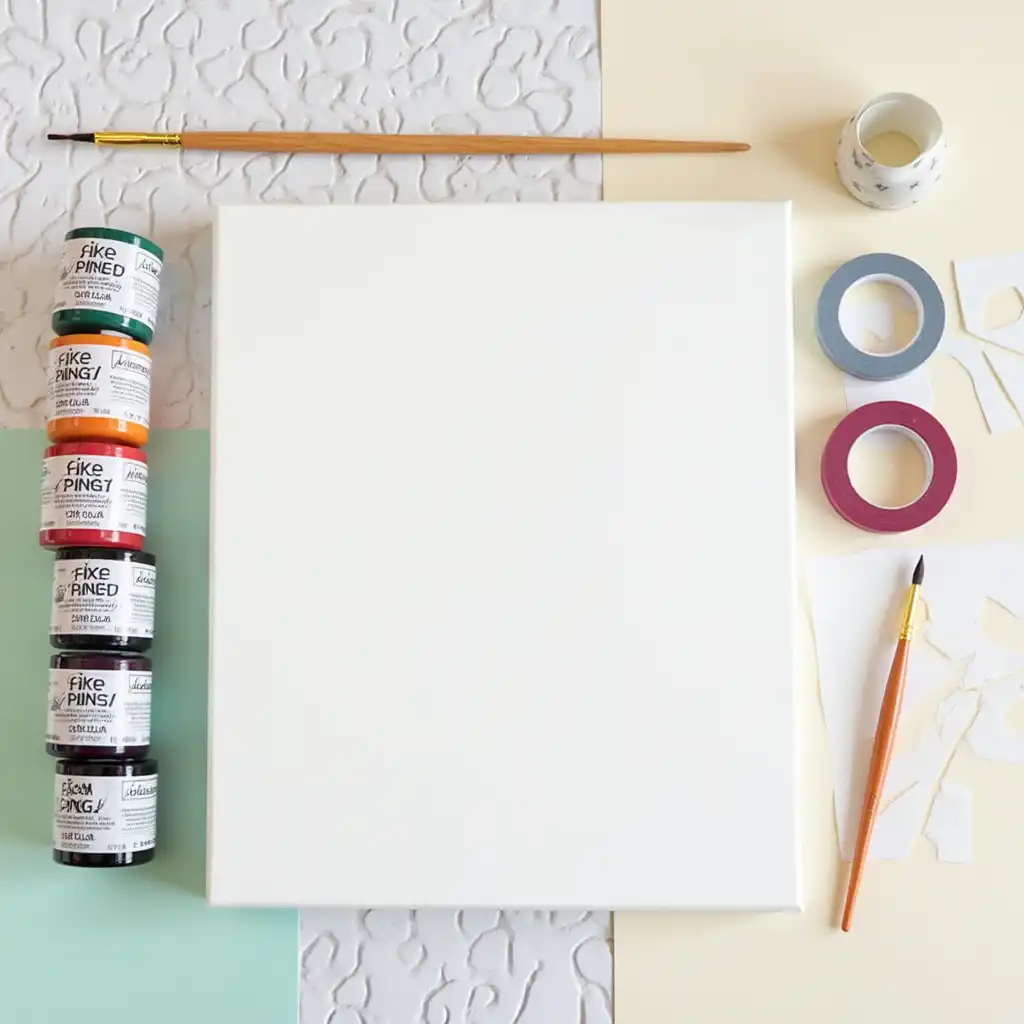
- Essential Materials:
- High-quality acrylic paints (choose a limited color palette).
- Canvas, wood panels, or a prepped wall.
- Brushes, rollers, painter’s tape, and stencils.
- Optional:
- Recycled materials for added texture.
- Protective varnish to seal your artwork.
Step-by-Step Project Outline
- Plan Your Design:
- Sketch your idea and decide on a color scheme that resonates with your space.
- Prepare Your Surface:
- Clean the wall or canvas thoroughly; apply a primer if necessary.
- Outline Your Design:
- Use painter’s tape to mark geometric shapes or areas where you want sharp edges.
- Apply the Paint:
- Layer your chosen colors, letting each coat dry before applying the next.
- Finishing Touches:
- Carefully remove the tape to reveal clean, crisp lines.
- Seal the artwork with a protective varnish for durability.
By following these steps, you can create a custom piece of minimalist painting that is uniquely yours, perfectly reflecting your aesthetic and creative vision.
Sourcing and Buying Minimalist Painting
If you prefer to buy rather than create, there are numerous platforms where you can find high-quality minimalist painting:
Where to Buy Minimalist Painting Online
- Etsy:
- A hub for independent artists offering a variety of minimalist paintings, from abstract designs to geometric art.
- Society6:
- Curated collections featuring modern, minimalist artwork that fits diverse styles.
- Local Galleries:
- Visit local exhibitions and art fairs to find unique, one-of-a-kind pieces.
Below is a comparison table to help you decide:
| Platform | Key Features | Price Range |
|---|---|---|
| Etsy | Custom, handmade, and personalized art | Budget to mid-range |
| Society6 | Curated collections, diverse minimalist styles | Budget to mid-range |
| Local Galleries | Unique, bespoke pieces, often with an artist’s story | Mid-range to high |
Tips for Buying Quality Minimalist Art
- Authenticity:
- Look for detailed artist profiles, clear descriptions, and verified reviews.
- Materials & Craftsmanship:
- Check if high-quality, eco-friendly materials are used.
- Customization:
- Consider artworks that offer personalization options to fit your décor perfectly.
Frequently Asked Questions (FAQ) About Minimalist Painting
What are the main characteristics of minimalist painting?
Minimalist painting is defined by a limited color palette, clean geometric shapes, and the creative use of negative space, all aimed at achieving a simple, balanced composition.
How can I create my own minimalist painting at home?
Start by planning your design, selecting a cohesive color scheme, preparing your surface, and using tools like painter’s tape and stencils for clean edges. There are many DIY tutorials online to guide you through the process.
What materials are best for minimalist painting?
High-quality acrylic paints, canvas or wood panels, and proper priming materials are essential. Some artists also use recycled materials to add texture while staying eco-friendly.
How do I choose the right minimalist painting for my space?
Consider your room’s size, lighting, and overall decor style. For a bold impact, opt for large-scale minimalist paintings; for a subtle touch, choose simpler, monochromatic pieces.
What are some famous minimalist painting techniques?
Techniques include the use of negative space, repetition of simple shapes, monochromatic color schemes, and the emphasis on clean, sharp lines to create a balanced composition.
Conclusion – Transform Your Space with Minimalist Painting
Minimalist painting offers a unique opportunity to transform your space through the art of simplicity. By embracing clean lines, a limited color palette, and strategic use of negative space, you can create artworks that not only enhance your decor but also evoke a sense of calm and balance. Whether you choose to embark on a DIY project or invest in a professionally crafted piece, minimalist painting brings a timeless elegance to any room.
Imagine your living room bathed in soft, neutral tones accented by a striking geometric painting. Picture a serene bedroom where a single, minimalist piece acts as a focal point, inviting tranquility and reflection. Even your office can benefit from the clarity and inspiration that minimalist art offers—transforming a simple wall into a daily source of motivation.
Remember, your walls are your canvas. With minimalist painting, you have the power to elevate your home decor while making a personal statement. Dive into the world of minimalist art, explore various techniques, and choose designs that resonate with your vision. Embrace the beauty of simplicity and let your space tell your unique story.
Call-to-Action:
Now is the perfect time to transform your space. Explore DIY tutorials, browse top online marketplaces, or visit local galleries to find the perfect minimalist painting that speaks to you. Share your transformation journey with us on social media using the hashtag #MinimalistPainting and join a community of art enthusiasts redefining their spaces with the elegance of simplicity.
By integrating modern abstract designs and creative techniques into your decor, you not only refresh your surroundings but also enhance your quality of life. Start your artistic journey today and let minimalist painting inspire every corner of your home!

